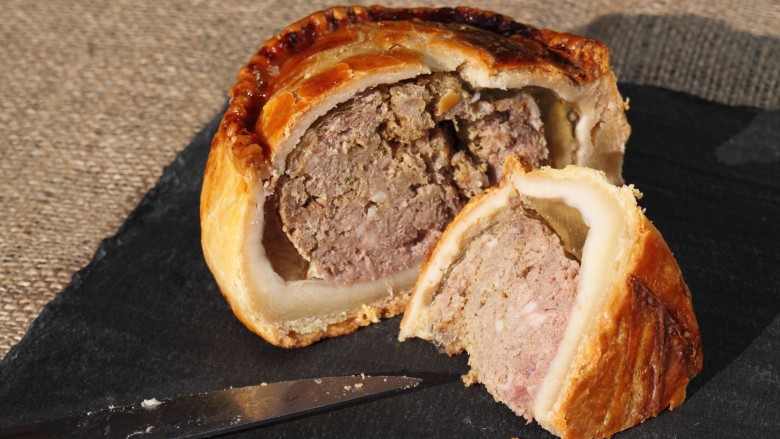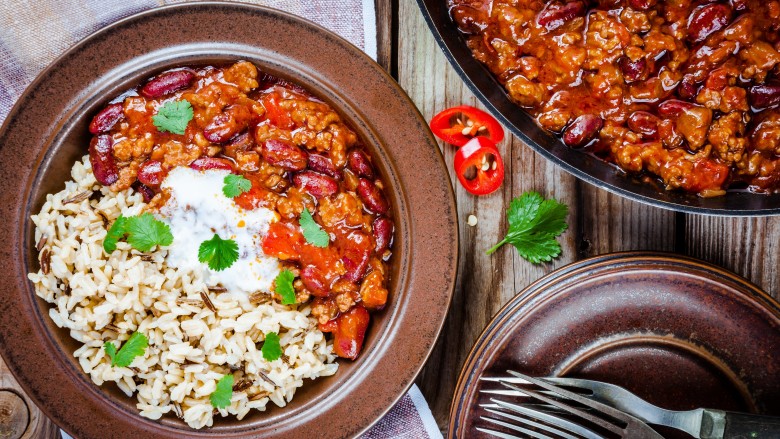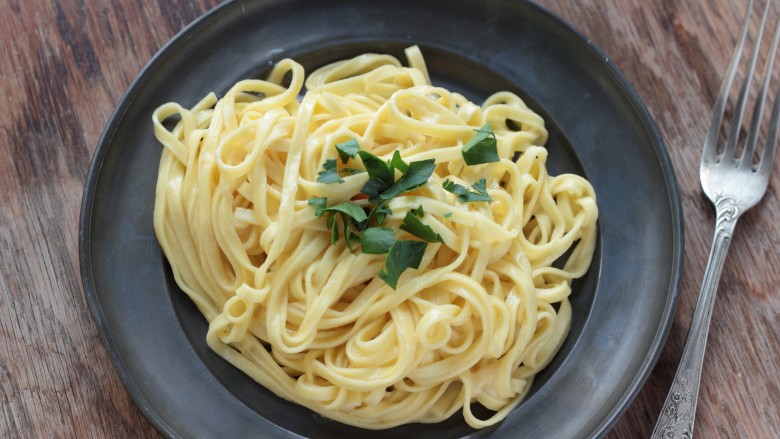Bizarre Prison Food From Around The World
What comes to mind when you think of prison food? Plain hamburgers, maybe, or some unhappy-looking vegetables. Mystery meat, if you're unlucky. Whatever it is (and wherever you are), the slop served up in your local pen is probably nasty and almost certainly unspeakably bland. That doesn't mean that has to be the case everywhere, though. Some prisons choose to eschew convention, preferring to offer up something a little more interesting to their inmates — for better or for worse.
Nutraloaf
You can hardly fault the U.S. prison system for its creativity in being uncreative. Nutraloaf is a notorious staple of the domestic prison diet which, depending on exactly where you are, might be made with anything from fruit and vegetables to bread and mystery meat. Every ingredient is baked together into a bland, meatloaf-style chunk of nothingness, with the intention of providing the poor soul eating it with all the nutrition needed to get through the day.
The recipe for nutraloaf hasn't changed much over the decades in which it's been served in the U.S. and Canada, meaning the dish — if it can claim such a lofty title — has managed to develop quite the fearsome reputation. It's most often used as a punishment for misbehaving prisoners or given to inmates in solitary confinement, and you'll likely struggle to find anybody who can bring themselves to say anything nice about it. Think of it like the spiritual successor to gruel, but somehow worse. And then try not to think about it anymore.
McDonald's
Alright, so it's not technically prison food, but any loophole will do when you're living on the inside. Bergisch Gladbach — a little city in the Cologne region of Germany — was faced with an unfortunate screw-up in March 2017, when a falling-out with a food supply contractor meant inmates at a local detention center were offered the alternative option of McDonald's.
Hamburgers, cheeseburgers, and veggie burgers were all on the dinner menu, with the cheese, ham, and bacon McToast available for breakfast. Germany's state interior ministry insisted it was a temporary measure, ostensibly made because the nearest McDonald's branch is located just next door to the prison. You get the feeling the inmates aren't clamoring for a quick solution to this particular "problem." Just watch those calories, guys.
Fine dining
The Fortezza Medicea in Volterra, Italy, isn't a half-imposing place. First built in the 14th century, the medieval fortress' dominating battlements — now the outer defenses of a maximum-security prison — overlook an otherwise sleepy town. What makes the Fortezza Medicea particularly remarkable, however, is the significant gastronomic impact it's had on Volterra. It's more than just a prison; it's also a fine dining restaurant at the right time of year.
A rehabilitation program that started in 2007 sought to take advantage of the culinary skills of the inmates, leading to the founding of a restaurant that has gone on to earn international acclaim. Murderers, robbers, and organized criminals (that'll be the Mafia) cook up meals for the lucky few who manage to get a table in the prison. The chefs even provide front-of-house service to diners.
The restaurant only opens for one-off events a few times a year, and space fills up fast. If you're feeling brave, head over to Volterra's website to check out the events calendar.
Pork pie salad
British prison food tends to be pretty standard fare. You've got your chicken supremes, your curries, your casseroles and your lasagna, but very little stands out as particularly noteworthy. One exception to this, however, came to light after a prison riot at HMP Birmingham in 2016, when local media outlets revealed the typical menus available to British inmates.
The most unusual item on the list, the pork pie salad, should raise a few eyebrows (especially among Brits) for a couple of reasons. It's a picnic food, for starters, so it doesn't exactly work as an evening meal. That, however, is a relatively minor point compared to the more alarming act of heresy that has been committed here: no British person has ever, ever eaten a pork pie with a salad. It is, simply put, a universe-ending paradox. Lord only knows what the prisoners must think of it.
Self-catering
Norway's Bastoy Prison is world-famous for its idyllic location and its willing provision of home comforts to the inmates, all as part of the country's efforts to rehabilitate, rather than punish, criminals. As they near the ends of their sentences, inmates who are on track to successfully rejoin society can apply to be transferred there. One aspect of life at the prison, which is arguably one of the world's most luxurious, is the chance for inmates to self-cater. Each prisoner is given a monthly food allowance of about $85, which they can spend at the prison's supermarket — if they don't already grow and farm their own food.
Bastoy's approach to self-catered dining isn't an anomaly in Norway, and Scandinavian prisons (in Sweden, Denmark, and Norway in particular) are very well-known for offering their inmates the chance to prepare and cook their own food. It's a far, far cry from nutraloaf.
Anything the inmates want from outside
What's better than being able to make your own meals in prison? Having someone else bring one in for you. That's the case at the Reclusorio Preventivo Norte in Mexico City. On Saturdays, Sundays, Tuesdays, and Thursdays, the friends and families of inmates flood through the prison gates to bring home-cooked meals to the folk on the inside.
Mexican prisons aren't exactly known for their hospitality or their fine cuisine — the usual meal tends to be a watery onion broth — but this system provides a satisfying alternative for the prisoners who can afford it. Cost is certainly a factor, too. Many of the poorer families don't have anywhere near enough pesos to regularly amass the bribes necessary for bringing food into the prison.
Controversial pasta (and more)
From time to time, a torrent of outrage is stirred up about the luxurious eating habits of high-level prisoners. This happens all over the world, but perhaps no example is so egregious as Australia when it was reported in 2013 that inmates of Goulburn Prison — a supermax — were being fed meals as lavish as pasta Alfredo, roast chicken, and ricotta burgers. Breakfast packs could include cereal, coffee, and seven slices of bread with milk, followed by lunches of sandwiches, fruit, and yogurt.
Incidents like these tend to bring up fresh ethical debates over the quality of food and quality of life that prisoners should have while incarcerated. On the one hand, you've got the soul-crushing nutraloaf of many U.S. facilities. On the other, the self-catered freedoms of Scandinavian prisons. Many tend to come down somewhere in between.
Ramen
At first glance, ramen may not seem like the most exotic or unusual dish to find in a prison. In fact, the simplicity and relative lack of flavor in noodles make it a fitting and seemingly unremarkable choice of food to serve up to prisoners. It's not so much the ramen itself that's noteworthy here, however, so much as it is how the ramen is used.
In 2016, NPR reported that noodles had become a de facto form of currency in many prisons across the U.S., leading to the creation of an entire microeconomy based around the dish. Ramen had been found to be used for everything from hiring the services of fellow inmates to purchasing black market goods. Using material goods to barter on the inside is hardly a new phenomenon — just take a look at the old prison stereotype of using cigarettes as money — but the gradual shift toward culinary currencies is a fascinating, if perhaps inevitable, aspect of life in prison.






